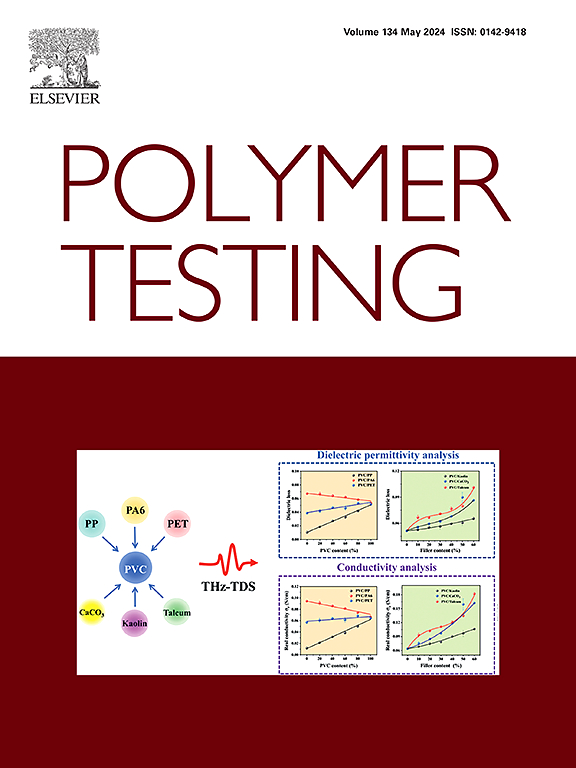微滴拉拔测试:纤维断裂结果的意义
IF 5
2区 材料科学
Q1 MATERIALS SCIENCE, CHARACTERIZATION & TESTING
引用次数: 0
摘要
纤维增强复合材料用于要求重量轻、刚度大的结构材料中。纤维或基体的性能固然重要,但界面性能对纤维增强复合材料的性能也有重大影响。本研究以丙烯酸树脂和环氧树脂为基材,测量了界面剪切强度(IFSS)。分析了丙烯酸树脂和环氧树脂基体材料的化学成分,以预测其对 IFSS 的影响。此外,还通过微滴拉出试验测量了 IFSS。通过对 IFSS 结果进行统计分析,提高了实验结果的可靠性。在环氧试样中,GF/环氧试样的 IFSS 比 CF/ 环氧试样高出两倍半。这说明纤维的表面处理对界面有重大影响。对于丙烯酸纤维,可以测量 GF 的 IFSS。但对于 CF,IFSS 太低,无法获得准确的 IFSS 结果。通过这项研究,我们探讨了提高复合材料界面强度测量实验准确性的方法,并提出有必要制定评估复合材料界面粘附性的标准化标准。本文章由计算机程序翻译,如有差异,请以英文原文为准。
Microdroplet pull-out testing: Significance of fiber fracture results
Fiber reinforced composites are used in structural materials that required light weight and stiffness. The properties of the fibers or matrix are important, but the interfacial properties have a significant impact on the properties of fiber reinforced composite. In this study, the interfacial shear strength (IFSS) was measured using acrylic resin and epoxy resin as base materials. The chemical composition of acrylic and epoxy matrix materials was analyzed to predict the effects on IFSS. Additionally, IFSS was measured through a microdroplet pull-out test. The reliability of the experimental results was enhanced by applying a statistical analysis to IFSS results. In the case of epoxy, GF/epoxy exhibited higher IFSS to twice and half times than CF/epoxy specimens. It means that the surface treatment of the fibers has a significant impact on the interface. In the case of acrylic, IFSS could be measured for GF. But in the case of CF, IFSS was too low to get accurate results of IFSS. Through this research, methods to improve the accuracy of composite interfacial strength measurement experiments were examined, and the study suggested the need for standardized criteria to evaluate composite interfacial adhesion.
求助全文
通过发布文献求助,成功后即可免费获取论文全文。
去求助
来源期刊

Polymer Testing
工程技术-材料科学:表征与测试
CiteScore
10.70
自引率
5.90%
发文量
328
审稿时长
44 days
期刊介绍:
Polymer Testing focuses on the testing, analysis and characterization of polymer materials, including both synthetic and natural or biobased polymers. Novel testing methods and the testing of novel polymeric materials in bulk, solution and dispersion is covered. In addition, we welcome the submission of the testing of polymeric materials for a wide range of applications and industrial products as well as nanoscale characterization.
The scope includes but is not limited to the following main topics:
Novel testing methods and Chemical analysis
• mechanical, thermal, electrical, chemical, imaging, spectroscopy, scattering and rheology
Physical properties and behaviour of novel polymer systems
• nanoscale properties, morphology, transport properties
Degradation and recycling of polymeric materials when combined with novel testing or characterization methods
• degradation, biodegradation, ageing and fire retardancy
Modelling and Simulation work will be only considered when it is linked to new or previously published experimental results.
 求助内容:
求助内容: 应助结果提醒方式:
应助结果提醒方式:


